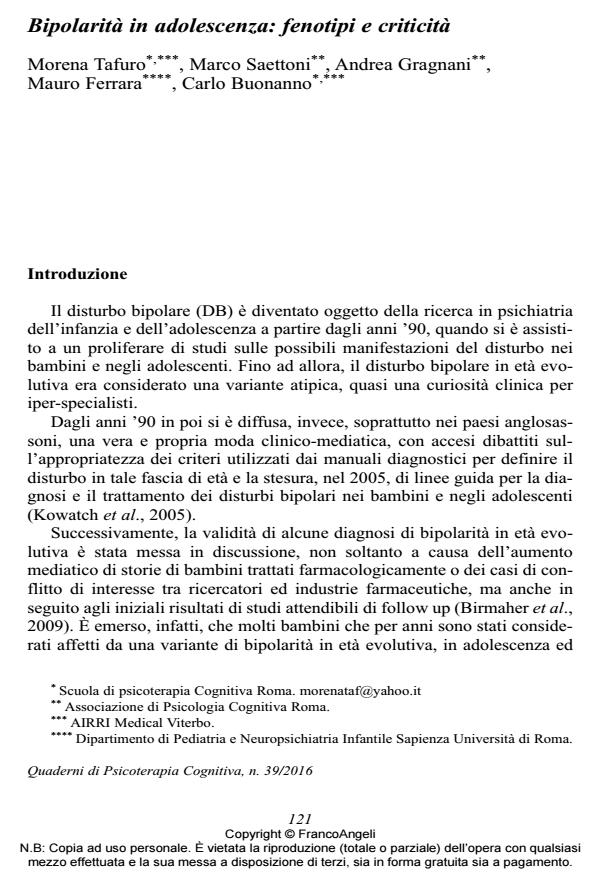Adolescence bipolarity: phenotype and critical issues
Journal title QUADERNI DI PSICOTERAPIA COGNITIVA
Author/s Morena Tafuro, Marco Saettoni, Andrea Gragnani, Mauro Ferrara, Carlo Buonanno
Publishing Year 2016 Issue 2016/39
Language Italian Pages 12 P. 121-132 File size 98 KB
DOI 10.3280/QPC2016-039008
DOI is like a bar code for intellectual property: to have more infomation
click here
Below, you can see the article first page
If you want to buy this article in PDF format, you can do it, following the instructions to buy download credits

FrancoAngeli is member of Publishers International Linking Association, Inc (PILA), a not-for-profit association which run the CrossRef service enabling links to and from online scholarly content.
Even if Bipolar Disorder (BD) is a well established clinical picture, studies of juvenile BD are more recent. Significant controversy exists regarding the diagnostic boundaries of early-onset BD but agreement is substantial that BD and its subtreshold antecedents have a considerable impact on general functioning and quality of life. Childhood onset BD compared with adult onset BD is associated with greater risk for comorbid psychiatric disorders, substance abuse and suicide. The principal reason for the difficulties in diagnosis in children and adolescents is the developmentally different presentation of the early-onset form from the adult disorder. We know that symptoms of BD often become prominent during adolescence, but data are still limited regarding phenomenology, prevalence, course, outcome of manic-depressive illness at this age. This paper summarizes known information about vulnerability issues, neurodevelopmental and age related psychological tasks interplaying in these conditions. Additionally, we have focused the importance of integrated pharmacotherapy, psychotherapy and psychoeducation in treating adolescent onset manic states.
Keywords: Bipolar disorder, mania, adolescence, integrated treatment.
Morena Tafuro, Marco Saettoni, Andrea Gragnani, Mauro Ferrara, Carlo Buonanno, Bipolarità in adolescenza: fenotipi e criticità in "QUADERNI DI PSICOTERAPIA COGNITIVA" 39/2016, pp 121-132, DOI: 10.3280/QPC2016-039008